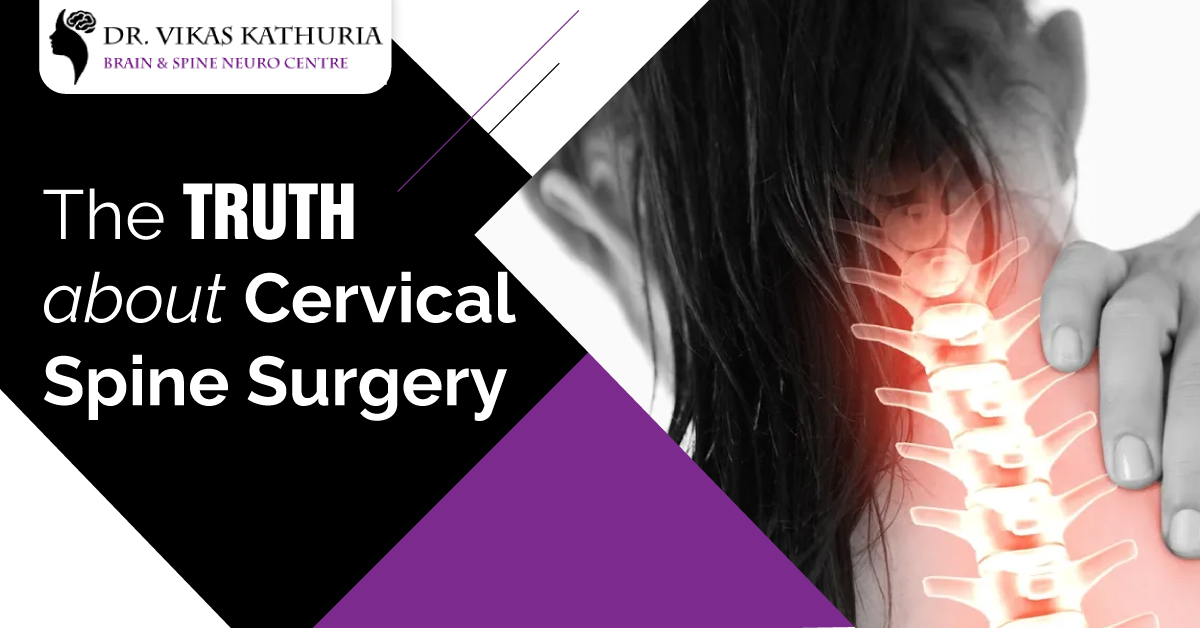The Truth About Cervical Spine Surgery

Complications are always possible throughout any surgical operation. However, even with minimal risk, significant issues can arise. According to experts studying mortality rates after cervical spine surgery, death is an infrequent, almost non-existent complication of neck surgery.
Operations on the Neck are Common in the US
In the United States, neck issues are frequently surgically addressed.
The study pointed out that problems like herniated discs and spinal stenosis can develop in the spine because of the neck’s susceptibility to tension and pressure.
Surgery to decompress nerves and stabilize the spine may be necessary, although as much as 80% of neck disorders can be handled with non-surgical therapy, such as medication.
What is cervical spine surgery?
Surgical decompression of the cervical spine is performed to relieve symptoms related to the spinal cord or nerve impingement, spinal instability, or Cervical radiculopathy. Spine Surgery Treatment may be a welcome solution for those suffering from pain or discomfort.
What is cervical spine fusion?
When numerous levels of vertebrae and discs are sick, a cervical spinal fusion may be recommended. To ease pain, surgeons sometimes remove whole discs and vertebrae and replace them with stabilizing cages.
What potential risks does cervical spine surgery pose?
Surgery on the cervical spine often has few negative consequences. On the other hand, there are always some potential downsides to any medical operation. In particular, individuals considering this operation may wish to think about the following:
- A cervical fusion will make it difficult, if not impossible, to fully extend or flex the neck to look straight up or down. (This procedure does not change the rotation of the head to the right or left.)
- A bone stimulator may also need to be worn following surgery to assist with this bone rebuilding. Patients may have temporary difficulty swallowing or sore throat after the procedure.
How long does it take for the neck to heal after having a fusion procedure?
After cervical spine treatment, you may have to wear a collar for up to six weeks. Although many patients feel relief from arm pain soon after the collar is removed, they may continue to experience discomfort in their neck or head.
Every patient has a unique path to recovery. Surgical discomfort is usually manageable, if not entirely pleasant, in the days following surgery. Under medical care, individuals typically recover in three to six months.
Talking to your Best Neurosurgeon in Gurgaon or physical therapist on how to stand and move correctly is crucial. The patient should accomplish as much as they feel up to doing each day and gradually increase the pace of their activity over time. Patients undergoing cervical spine surgery must keep their post-op appointments and follow their doctor’s orders.
When comparing anterior and posterior cervical decompression, what are the key differences?
Dr. Vikas Kathuria may choose to apply one or both cervical decompression procedures in a patient’s treatment strategy, especially when many levels of vertebrae and discs are problematic.
Anterior Fusion
Whole discs and vertebrae may be removed during this neurological treatment, and stabilizing cages may be used. The doctor will also insert a spinal plate and secure it to the spine. Bone harvested during surgery is used to repopulate the rib cage, facilitating healing and regeneration. For this reason, some surgeons recommend wearing a bone stimulator following surgery.
Posterior Fusion 
When the neck needs extra support, doctors sometimes perform a posterior fusion in addition to an anterior one. The posterior approach reduces pressure on the spinal cord and nerves coming from the back by inserting rigid rods into the spine. Bone fragments from the surgical site are used as a graft to speed up the healing and fusion phases of the procedure.
Comparison of Spine Surgery Risk Based on Whether or Not It Is an Emergency vs. Elective Procedure
The researchers stated that one of the critical factors that may raise fatality risk during surgery is whether the procedure is an emergency or elective (regular) (routine). The study cited indicated that the mortality rate for emergency cervical surgery was 19 times higher than for elective surgery.
Trauma to the cervical spine or the presence of a spinal tumor both warrant immediate surgical intervention.
Despite the Low Risk, There May Be Some Complications
Surgery on the cervical spine has a high success rate but is not without risks.
The main takeaway is that problems were exceptionally uncommon, if not nonexistent. However, even though they occurred frequently, a torn dura and C5 palsy were still the most common, albeit unusual, injuries.
Incidence-wise, dural tear (a tear in the spinal cord’s protective covering) is the most common complication after neck surgery, yet it only occurs 0.77 percent of the time. Despite the reassurances in this blog post, you can increase the likelihood of a positive outcome from a cervical spinal fusion by having an open dialogue with your surgeon about the potential risks and benefits of the treatment.
